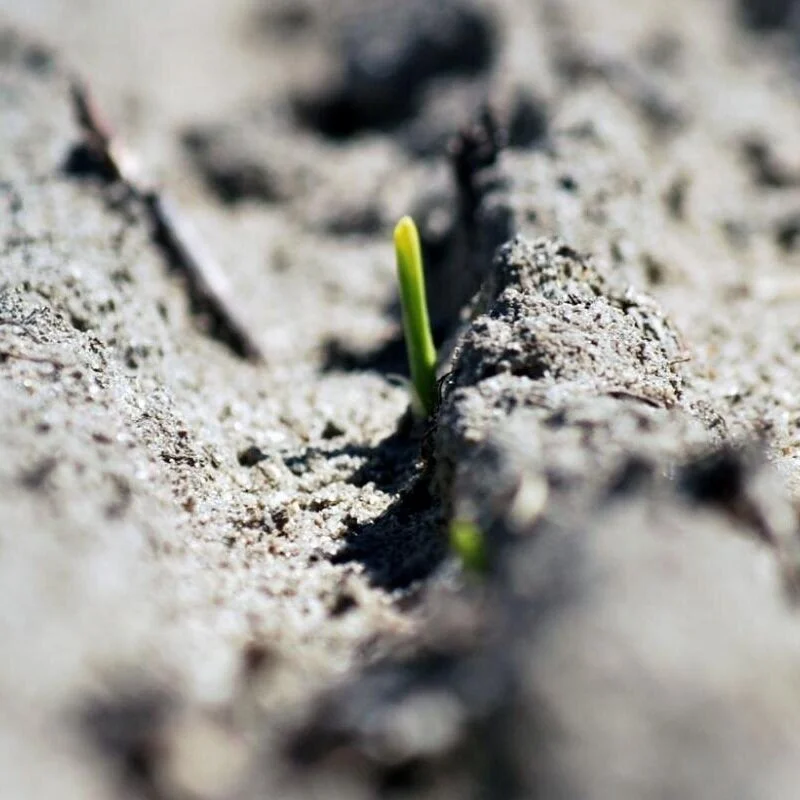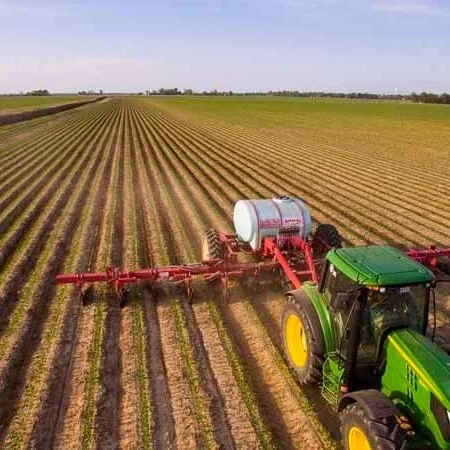Burndown Options For Corn
Weed management is a year-round job, but producers take special care to make sound management decisions prior to planting—including cover crop burndown.
David Russell, an Alabama Extension weed scientist, offers suggestions for planting into a weed-free field and maintaining a clean corn crop throughout the growing season. Russell’s areas of specialization include corn, soybeans, small grains, forages and non-crops.
Read More
The Mississippi River is Running Lower in Baton Rouge Than Past Years, But Will it Last?
A drier-than-usual year up north has Baton Rouge-area farmers and communities along the Mississippi River breathing a sigh of relief as the threat of flooding due to high water levels may not be a significant headache this year.
The river in Baton Rouge appears to have crested last week at about 38 feet, just over what’s considered a moderate flood stage. The National Weather Service projects waters will gradually continue to fall and could even reach minor flood stages by early next week, even with this week's rains.
Read More
Corn May Be King, But Soybeans Rule US Exports
By a wide margin, soybeans are the most valuable U.S. farm export, accounting for 18¢ of every $1 in sales during calendar 2020, said the USDA’s Foreign Agricultural Service on Wednesday. Corn, the country’s most widely grown crop, was second in export value to soybeans, which were worth a record $25.7 billion compared with $9.2 billion for corn.
Read More
WASDE Report Bullish For Corn, Wheat, Bearish For Soybeans
USDA on Friday lowered corn ending stocks for the 2020-21 by 150 million bushels (mb) to 1.352 billion bushels (bb) but held pat with soybean ending stocks at 120 mb.
USDA raised corn use for feed, seed and industrial use, as well as exports to drop the ending stocks for the crop.
Read More
Stepping on Stepped-up Basis Has Big Consequences
Any change in capital gains tax policy that eliminates or scales back stepped-up basis could result in a massive tax burden on the agricultural sector according to new analysis by the American Soybean Association and the American Farm Bureau Federation.
To minimize the impact of burdensome capital gains taxes, farmers and ranchers use stepped-up basis, which provides a reset for the asset value basis during intergenerational transfers. The magnitude of the tax burden that would be felt if basis is taken away or reduced would likely significantly exceed the annual income generated by the assets, something that has soy and other American farmers concerned.
Read More
Cotton, Rice Down, Corn, Soybeans Up In Latest NASS Report For Louisiana
Louisiana Prospective Plantings Report, March, 2021
Read More
Rebuilding The Grain Bin Destroyed by Hurricane Then Tornado
To understand the weather challenges of growing crops in the Blacklands of North Carolina, the story of both a hurricane and tornado that did in the grain facility of Green Valley Farms near Columbia in Tyrell County fits the bill perfectly.
Read More
LA Corn Planting Nearly Finished But Delayed By Rain
Wet weather has stopped Louisiana farmers from finishing this year’s corn planting, but not before they got the majority of the crop in the ground. LSU AgCenter reporter Craig Gautreaux has this report from northeast Louisiana.
Read More
Pro Farmer Survey Shows Farmers Plan To Plant Record Corn & Bean Acres In '21
As the acreage battle continues to play out, a Pro Farmer member survey shows better commodity prices are attracting more acres this year.
The Pro Farmer/Doane survey revealed farmers plan to plant more acres, with total area planted to crops in the U.S. expected to rise to 319.4 million acres. That would be up nearly 3%, or 8.9 million acres, from 2020. If the survey findings hold true, it also means U.S. acreage will hit the highest level since 2018.
Read More
Updates from the Field on Spring Planting: Louisiana
Spring planting is underway in parts of the country. As farmers gear up their planters, we are bringing you updates from the field.
Louisiana farmer Drew Keahey spoke with RFD-TV's own Janet Adkison on his operation, planting status and current conditions, and any possible hurdles that might await him.
Read More
China Buys $850 Million Worth Of US Corn
In a four-day shopping spree, importers bought 3.876 million tonnes of U.S. corn for delivery to China this marketing year, said the USDA. The corn was worth $850 million, based on futures prices in Chicago.
Read More
Louisiana Corn: Nitrogen Rate & Fertilization Timing
Nitrogen is the most yield limiting nutrient for corn production. Corn requires nitrogen for amino acids, protein, and chlorophyll production. Chlorophyll is the key component for photosynthesis. Insufficient chlorophyll content results in reduced yield potential.
Read More
Planting Begins in the South
Farmers in southern states are starting to plant their crops. Texas farmers have about a quarter of their 2021 corn crop planted while farmers in Louisiana have 14% of their corn in—both states showing about average progress. There are also reports that some of the spring wheat crop is being planted in North Dakota.
Read More
China Likely To Purchase More US Corn
China, the biggest corn consumer after the U.S., is still short of the feed grain, and more overseas purchases are likely.
Asia’s top economy has to nourish the world’s largest hog herds and supply a growing local refining industry, which produces everything from sweeteners to starches and alcohol. The increased demand this year and in future years comes as the country grapples with limited amounts of productive farmland.
Read More
Six Common Yield Limiting Factors In Corn
https://www.farmprogress.com/corn/6-common-yield-limiting-factors-corn
Read More















